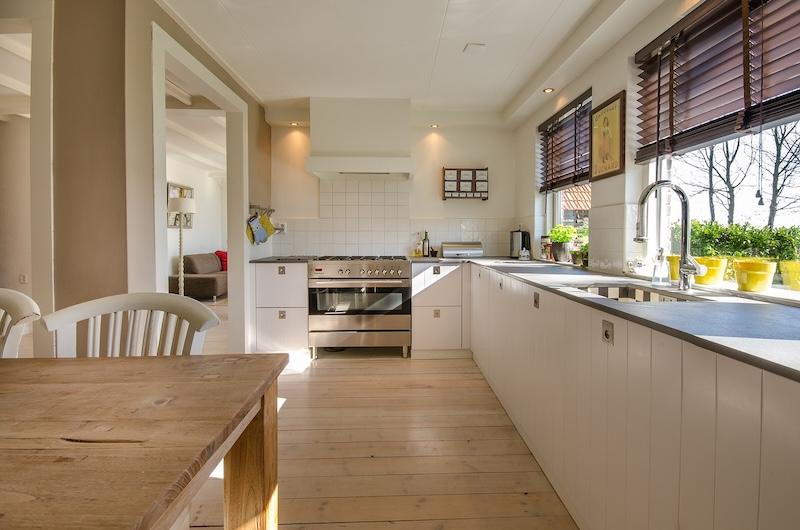A structure's interior flooring contributes to the enhancement of the interior. Many materials, colors and shapes are available for sale as indoor flooring. The primary factor driving the growth of the indoor flooring market is the increase in the renovation and remodeling of older homes. In addition, the construction of new homes is another factor driving the indoor flooring market. Introducing new indoor flooring products that are both cost-effective and easy to install has also increased market demand. Throughout the forecast period, the market for indoor flooring is expected to be bolstered by the rise in awareness regarding the construction of environmentally friendly buildings.
According to Straits Research, “The global indoor flooring market size was valued at USD 136.45 billion in 2021, envisioned to reach USD 217.48 billion growing at a CAGR of 6% during the forecast period.” The development of shopping malls and offices in Asia, Africa, and Latin American developing nations is a significant factor in expanding the global market. Since 2017, roughly one hundred malls have been built in Latin America. These malls have multiple floors and are situated on many acres. In addition, the rapid industrialization of developing nations has led to the construction of new, abundant office spaces in major metropolitan areas. Moreover, urban development has facilitated the effective utilization of urban land. By 2040, it is anticipated that the global population will increase by approximately 2 billion, with a 46% increase in urban population, resulting in a massive demand for residential and commercial structures.
Old infrastructures are being demolished to make room for the construction of new, modern structures, increasing the demand for renovation and remodeling projects. Land has become a scarce resource in urban areas. Furthermore, the increased construction of high-rise buildings to accommodate a large population has necessitated the demolition and reconstruction of existing structures. In addition, numerous old buildings and structures have outlived their usefulness and are no longer habitable. Consequently, owners or the government demolish the structure to construct new ones. In addition, the growing trend of renovating or remodeling older homes and buildings to improve their appearance increases the demand for interior floorings.
In addition, installing new flooring is a straightforward process that entails removing the old flooring, cleaning the surface, and applying an under layer, which is fixed for a smooth surface to prevent moisture absorption and temperature change. When a flooring patch is damaged, it is removed and replaced with a similar design and size. There is no need to remove or uninstall the area's entire flooring. These benefits of flooring products make do-it-yourself applications popular and drive the worldwide indoor flooring market.
The Growing Green Building Awareness to Create Global Indoor Flooring Market Opportunities
Rising environmental awareness regarding waste recycling and reuse among individuals and increasing CO2 emissions are anticipated to generate growth opportunities for the sustainable indoor floor products. Participants in the market have taken proactive measures to recycle non-hazardous waste to prevent pollution and lower environmental risks. Recycling processes for construction and demolition waste are increasingly adopted to reduce CO2 footprint, minimize environmental impact, develop urban space, reduce the amount of land required for landfills, and create global job and business opportunities. Consequently, it is anticipated that these factors will facilitate the global market's expansion.
Regional Insights
The Asia Pacific is estimated to expand at a CAGR of 6.41% and command the market with the largest share. As a result of the speedy development of the construction industry and the availability of raw materials, it is anticipated that the market for indoor flooring in the Asia-Pacific region will experience a significant growth rate. In addition, fast-growing markets such as India, China, Indonesia, and Malaysia are participating infrastructural development and an increase in new construction activities, which is anticipated to increase the demand for indoor flooring solutions in commercial buildings such as schools and malls, airports, and offices.
In addition, major players are attempting to establish manufacturing facilities in these markets to increase production volumes and serve Asia's residential and non-residential construction industries. These developments impact the growth of the construction and manufacturing industries. Therefore, it is anticipated that improvements to global production facilities will create opportunities to expand the indoor flooring market in this region.
Key Highlights
- Based on type, the ceramic tiles segment is expected to advance at a CAGR of 6.5% and will hold the largest share.
- Based on construction type, the new construction segment will advance at a CAGR of 6.1% and hold the largest market share.
- Based on end-user, the residential segment is expected to grow at a CAGR of 6.25% and will hold the largest share.
- Based on regional analysis, the Asia Pacific is estimated to expand at a CAGR of 6.41% and command the market with the largest share.
Competitive Players in the Market
- Armstrong Flooring, Inc.
- Beaulieu International Group
- Ecore International
- Forbo International SA
- Interface, Inc.
- Mats Inc.
- Mohawk Industries, Inc.
- Shaw Industries Group, Inc.
- Tarkett
- Toli Corporation.
Market News
- In 2022, Armstrong Flooring, Inc. announced the launch of three new heterogeneous sheet collections, Asanaä, Nidraä, and Zenscapeä.
- In 2022, Ecore International launched the first vinyl sports floor with high-performance rubber backing.
Global Indoor Flooring Market: Segmentation
By type
- Ceramic tiles
- Carpet
- Vinyl, Linoleum & Rubber
- Wood & Laminate
- Other
By construction type
- New Construction
- Renovation
By end-user
- Residential
- Commercial & Industrial
By region
- North America
- Asia Pacific
- Europe
- LAMEA



